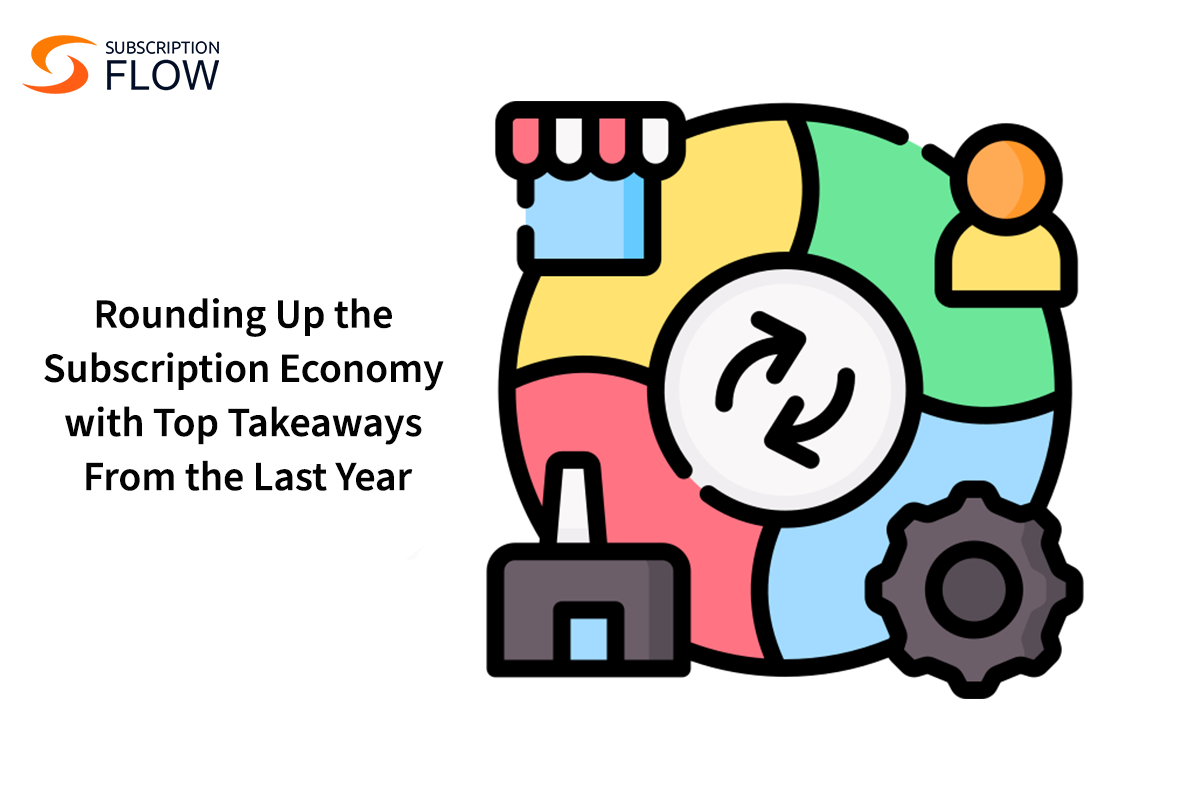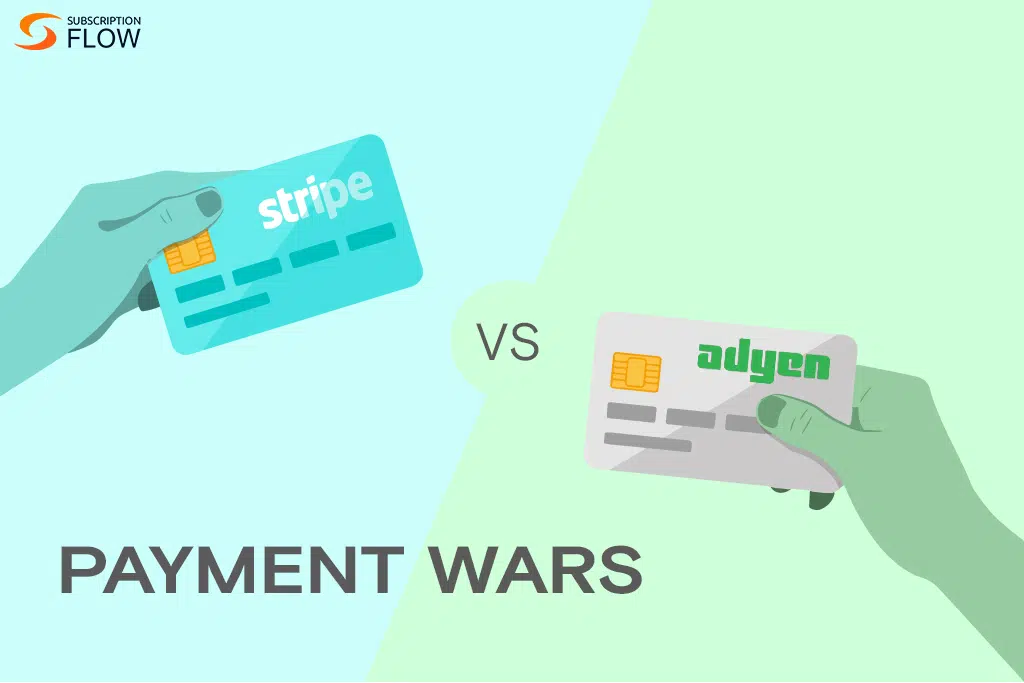
Good Bye 2020—Rounding Up the Subscription Economy with Top Takeaways From the Last Year
2020 is ending. The year brought in trial and tribulations of the COVID pandemic with lockdowns, uncertainties, and fall of the global economy for the individuals, businesses, and overall growth of the market anywhere in the world.
The subscription services were not limited to the cloud-based digital spaces and content only, it capitalized more on physical goods, entertainment, education, sports, and health. During the lockdowns, subscription services provided more convenience to the people for having all they need and readily available to their doorstep and facilitated them all they need for remote working from their couches with a wide range of cloud-based SaaS business solutions, regularly.
A report suggests that nearly one-quarter (22.5%) saw subscription growth rates accelerate, while 12.8% saw subscription growth slow but were still onboarding new customers. Health and wellness, pet, and specialty retailer sectors saw particularly strong growth and reported surging numbers of subscribers.
However, some businesses that were not equipped enough had faced more challenges than opportunities when they turned to the subscription model.
Also Read: 2020 Is Ending—20 Ways to Not Miss Any Revenue Opportunity This Season
This article is a subscription growth round-up that entails the top 10 takeaways of the COVID-ridden market and its impact on the subscription economy in the year 2020. It touches all the key areas of the subscription economy—from the subscription business model to subscription market and subscription business trends to subscription payments:
-
Subscription Businesses Outperformed Traditional Businesses In Pandemic
It was a tough year for subscription businesses as well but was not as excruciating as it was for the businesses following other business models than a subscription. Long before 2020, the subscription economy was already on the right track as businesses have already begun realizing the significance of the shift in their models in the line with the changing customer behaviors and altering purchasing preferences.
The unpredictable fall of the economy due to trade-cease, instability in the demand and supply, and the sudden disruption of the business operations wreaked havoc on the organizations that were not prepared with the reliable streaming of revenue. In contrast, subscription businesses with reliable recurring revenue streaming and customers on-board tightened their reins to provide them more services and fulfill their needs amid the hard times and on a budget.
-
Subscription Services Witnessed Surge in Growth Across Industries
As the technology is ascending with an inexorable speed and companies across all industries are increasingly turning to subscriptions to set their businesses up, the same trend has been observed in the year 2020 and at a breakneck pace as people subscribed to even more services and own less physical goods.
Automobile, health, personal care, education, IT, telecom, SaaS, consulting, online learning, boarding, lodging, and traveling, law, and subscriptions for the articles of everyday needs—all across the industries, businesses found opportunities of constant and reliable revenue growth in the year 2020.
The year even greased the wheel of success for the industries that had so far did not step into the subscription market like automobile, manufacturing, real estate, construction, investment, and more.
-
Remote Working Bestowed Progress to SaaS Subscription Businesses
It would not be a false claim if we say that 2020 was the year of SaaS subscriptions. From business processes management, online working, and communications to the management of personal health, finances, and, overall life, there was no area where SaaS has not made significant contributions.
SaaS platforms gave new wings to the subscription-based remote working with a range of solutions for team and project management, billing and invoicing, online payment processing, sales, marketing, and customer service automation and management, and other industry-specific solutions that allowed employees to keep the wheel rolling of their organization from wherever they are.
-
Customer Retention Materialized As the New Norm for Business Growth
Every time a customer loses, the subscription business incurs more losses in comparison with the one-time or up-front revenue models. This is why subscription businesses need to retain more customers for a longer period.
Many of the subscription businesses like Salesforce, Netflix, Uber, Google, Apple, and others have millions of customers but a shift in focus on customer retention business strategies and providing more services in bundles have been observed in 2020.
Amidst the pandemic, it has become easier for the consumer to switch to another service provider if they are not contented with the service. Netflix lost hundreds of its subscribers to Amazon Prime and Uber lost to Lyft as it is only the best deal with the personalized customer experience that can keep the customers with a service.
-
The Rise of Rundle Accelerated the Subscription Growth
Scott Galloway has coined the term ‘rundle’ for the subscription bundle. The rundles are meant to describe the power of the recurring revenue boosting the subscription businesses when their services or products are available as bundles.
The tech industry, telecom, digital media, streaming services, and the subscription box offered more services as bundles to help customers save more when subscribing to a single bundle instead of going on for several subscriptions.
Recently, Apple has introduced the Apple One—a horde of the subscription plans with an assortment of apps as Apple One. The plan bundles Apple’s premium subscription services, like Apple Music, Apple TV Plus, and Apple Arcade, at a discount.
Likewise, earlier Google has introduced the subscription plan to its apps as a subscription bundle that includes cloud storage, backups, and promotions. The music streaming platform, Spotify, partnered up with Hulu as an add-on subscription to add extra value to their subscription services. Netflix allied with several smart TV brands and satellite services providers to provide their experience ultimate watching experience with hi-tech services in a bundle.
The cable industry is also offering its services in bundles. These bundles usually offer TV, internet, and phone services, together.
-
SVOD Followed by SaaS, E-Learning, and Subscription Box Business Emerged as the Leading Subscription Industries
According to a report on subscription growth, 18 percent of the subscription businesses have shown accelerated growth include streaming services, online learning, subscription box businesses, and SaaS.
Subscription Video-On-Demand or the OTT subscriptions were undoubtedly the most thriving subscription industry during 2020. The year began with the worldwide lockdowns that bestowed opportunity for the subscribers to capitalize. Netflix, Amazon Prime, Hulu, and other streaming services have seen a skyrocketed growth in new subscriptions. However, after the lockdown, the growth has also plummeted in Q3 of 2020.
During the pandemic, the schools, colleges, and all the educational, technical, and vocational institutes were completely shut down. It boosted the scope for e-learning. Only in the United States, the online education market is expected to grow by USD 21.64 billion during 2020-2024.
Along with SVOD and e-learning, SaaS as a business process management solution remained profitable to help businesses operating multiple business processes everywhere from anywhere and anytime.
Last but not the least, the subscription box businesses have shown tremendous growth. It took full advantage of the laziness, helplessness, adventure, ease, simplicity, and the recurrence of needs to deliver customers with all they need at their doorstep on a recurring basis without making payments again and again.
-
IoT, Car Subscriptions, Airlines, Telemedicine, and Manufacturing Stepped Into the Subscription Field
The recurrence in needs, altering customer preferences, and budget efficiency of the subscription model attracts more customers to opt for the unconventional subscriptions. 2020 was the year when industries like automobile, health, airlines, shipping, and manufacturing showed their interest in the subscription model.
Instead of purchasing a car, customers are inclined to the rental subscriptions of the cars. Autonomous vehicles are also a step towards connected smart cities. With the smart health, fitness, and security devices and virtual travel and personal assistants, IoT subscriptions have also gained popularity in 2020 when the people who were in lockdowns were curious to experience the life outside their abode.
Another field of subscriptions that have started to proliferate in 2020 was telemedicine and pharma subscriptions. To avoid the contraction of the virus and lessen the healthcare burden, a shift towards telemedicine subscriptions allow people to take instant healthcare advantage from anywhere and received their prescriptions at their doorstep.
-
Subscription Businesses Capitalized On Enhanced Customer Experience and Data-Driven Personalization
The increasing use of AI and ML in business applications help subscription businesses to boost their business process management with data-driven solutions and provide enhanced and personalized customer experience from content curation and targeted marketing to optimized solutions for pricing and payments at check out.
The data-driven personalization of the content and services also provided more opportunities for the subscription businesses for upsells and cross-sells. Subscription businesses grooved for more automated subscription management found more opportunities in data to enhance the customer experience.
-
Inefficient Online Payment Processing Triggered Voluntary as well as Involuntary Churn
Churn is the loss of subscribers due to subscription cancelation. And, every year a significant number of subscription businesses lose their potential sources of recurring revenue due to churn. Churn is voluntary when the subscriber cancels the subscription and it is involuntary when the subscription merchant cancels a subscriber’s subscription. In both cases, it is the subscription merchant who suffers the loss.
Subscription business needs customers to not only continue their subscription but to resubscribe the plan when their subscription term ends. The recurring revenue model demands the subscription merchant mitigate churn in any case.
In the year 2020, several reports suggest more complaints of the churn. Primarily, due to inefficient payment processing by the merchant. Either, the subscribers cancel or do not continue with paying the subscription when they have found difficulties in online payment methods or local currency support or their subscriptions are canceled by the merchant as a result of online payment failure.
Subscription businesses with less support to the online payment processing incurred more revenue loss due to voluntary as well as involuntary churn.
-
Mobile Commerce Brought In More Money In Subscription Businesses
The rise of mobile commerce also gave an unprecedented boost to online payments with mobile payments. Mobile commerce is reshaping the purchasing habits of consumers.
According to a research report by App Annie, the subscription revenue increased mobile consumer spend from USD3.8billion to USD4.6 billion in 2019 from other than gaming in-app purchases, and the trend continued in 2020 as well.
From recurring telecom and other utility bill payments to social media and streaming subscriptions to the business solution, subscription box, and other in-app recurring purchases, mobile payments brought in more recurring revenue for the subscription merchants with the In-app subscriptions.
The prevailing mobile payments trends with a range of mobile wallet options made it easier, simpler, safer, and faster for the subscription merchants to provide the best checkout experiences with pre-populated payment details and payment processing in a blink of an eye only.









